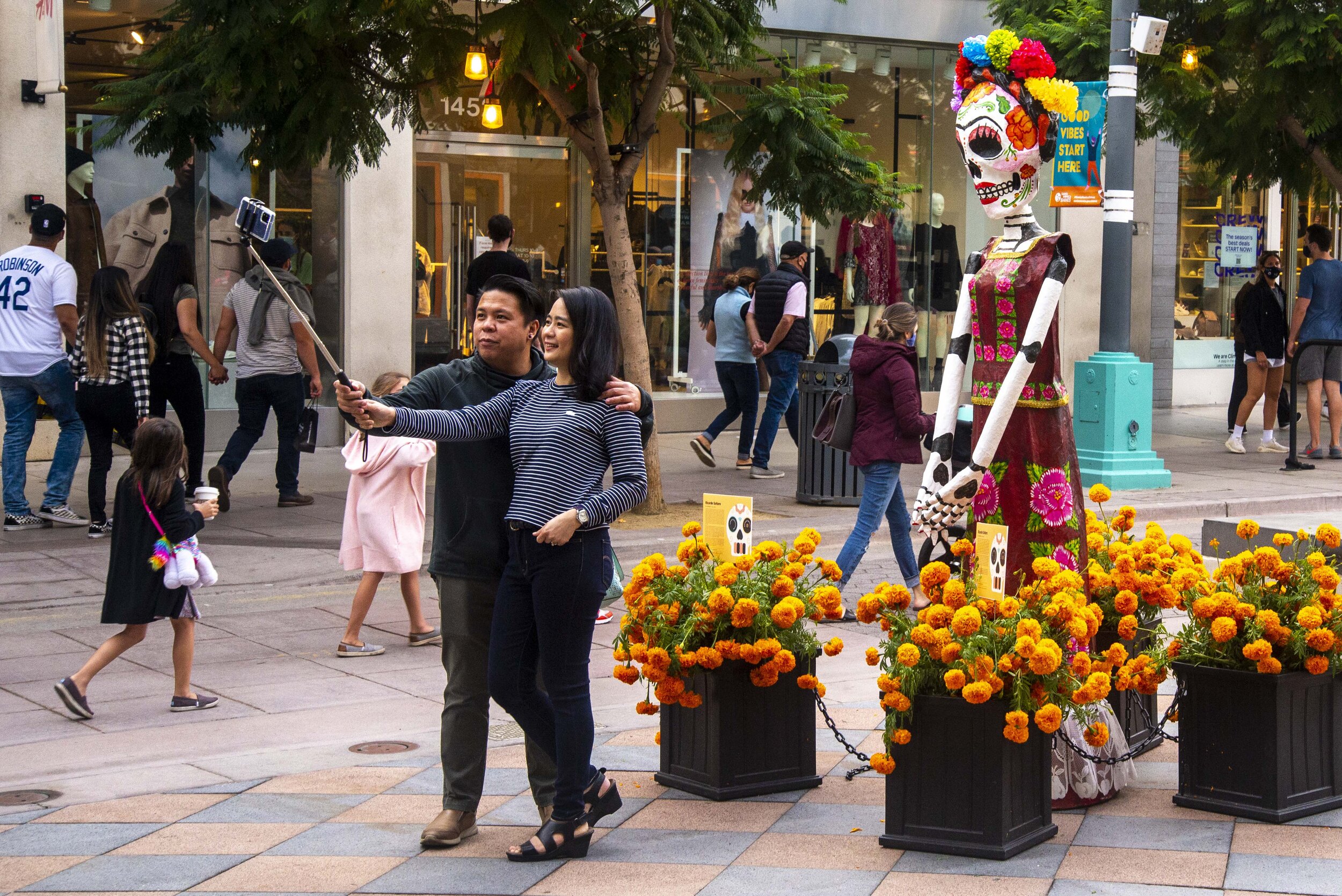History and Traditions of Halloween and Dia de Los Muertos
Las Catrinas arrive to Third Street Promenade for Dia De Los Muertos. Sponsored by Downtown Santa Monica, Public art installation by Ricardo Soltero who brought Mexico’s Day of the Dead celebration to Santa Monica. Saturday, Oct. 31, 2020 in Santa Monica, Calif. (Alex Ramirez Canales/The Corsair)
Halloween, previously known as All Hallows Eve, originates from the ancient Celtic holiday known as Samhain. During Samhain, Celts lit bonfires and wore costumes to ward off ghosts. They believed that on Oct. 31, spirits of the dead or ghosts returned to Earth to damage crops and cause trouble.
Celts associated Samhain with the end of the summer harvest. They performed sacrifices to Celtic deities to protect them from the harsh winter and the deaths brought in that time. In the eighth century, Pope Gregory III dedicated Nov. 1 as a day to celebrate All Saints' Day, which incorporated some of Samhain's traditions.
Halloween became popular in the United States around the second half of the nineteenth century when Irish immigrants migrated to the U.S. due to the famine. Today, Halloween has evolved into a day of trick-or-treating, costumes, and festivals to make the holiday more family-friendly and community focused.
Dia de Los Muertos (Day of the Dead) is a traditional Mexican holiday celebrated from Oct. 31 to Nov. 2. It has grown to be celebrated throughout many Latin American countries, the Caribbean, and the United States.
Dia de Los Muertos combines the European Catholic traditions of All Saints' Day with Aztec rituals honoring the deceased. It is not a day of mourning, but a day to celebrate the lives of loved ones who have already passed and to acknowledge that death is part of the human experience.
Dia de Los Muertos comes with many traditions, including making altars and giving ofrendas (offerings) to those remembered and honored, making Pan de Muerto (bread of the dead), and decorating skulls. Many people choose to celebrate privately at home and at cemeteries where their loved ones have been laid to rest.
Making traditional altars and leaving ofrendas is one of the most important elements of the holiday. When preparing an altar for a deceased loved one, it is customary to create beautiful displays and leave the deceased’s favorite foods or drinks, along with photos. Ofrendas tell you a lot about deceased loved ones and what they enjoyed when they were still alive.
Pan de Muerto, or bread of the dead, is an essential element of the holiday and can be bought in many grocery stores or made at home. The round shape of the bread represents the human body, while the long figures laid over the top of the bread represent the bones -- the round knot in the middle represents the skull.
From paper-mache to edible sugary creations, skulls are seen everywhere during Dia de Los Muertos. The skulls' significance is to honor the continuous cycle of life and to be reminded of death. Many people carve the names of their relatives and loved ones on these skulls when they leave them at altars.
Both Halloween and Dia de Los Muertos have deep traditions and culture behind them, and focus on bringing families and communities together.











